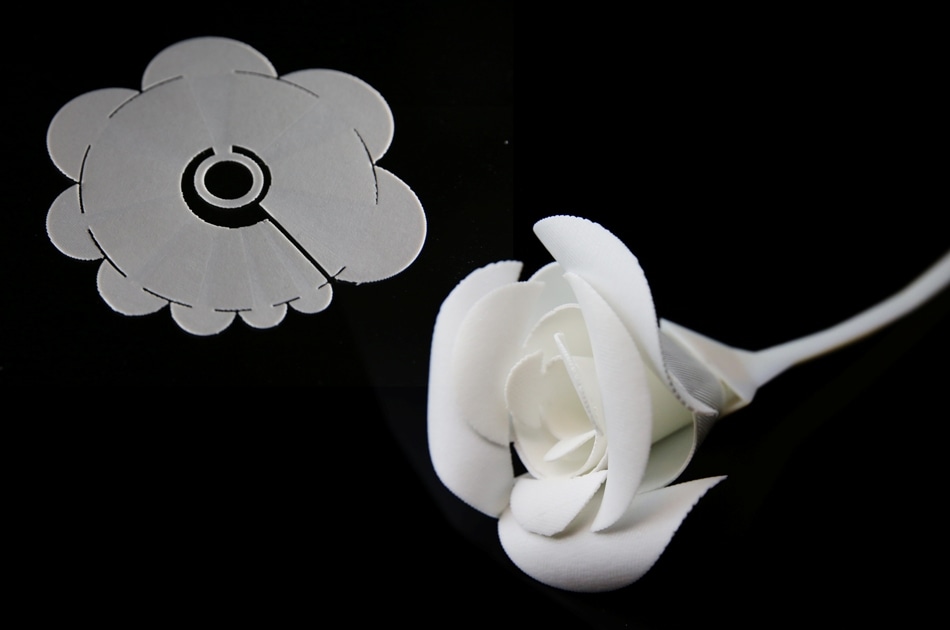Apr 25 2018
Using an economical 3D printer, a team of researchers at Carnegie Mellon University created flat plastic items that folded themselves into predetermined shapes, such as a boat, rose, or even a bunny when heated.
 CMU researchers have used an inexpensive 3D printer to produce flat plastic items that, when heated, fold themselves into predetermined shapes, like this rose. (Image credit: Carnegie Mellon University)
CMU researchers have used an inexpensive 3D printer to produce flat plastic items that, when heated, fold themselves into predetermined shapes, like this rose. (Image credit: Carnegie Mellon University)
Lining Yao, assistant professor in the Human-Computer Interaction Institute and director of the Morphing Matter Lab, said these self-folding plastic objects signify a primary step toward products such as flat-pack furniture that take up their final shapes with the help of a heat gun. Emergency shelters can be shipped flat and folded into shape using the heat from the sun.
Self-folding materials are cheaper and quicker to make than solid 3D objects, making it viable to substitute noncritical parts or create prototypes using structures that approximate the solid objects. Molds for boat hulls and other fiberglass products might be economically produced with these materials.
Yao will present her team's research on this technique, which she has named Thermorph, at the Conference on Human Factors in Computing Systems (CHI 2018), held in Montreal from April 21 to 26.
Other researchers have studied self-folding materials, but usually, have used exotic materials or relied on sophisticated processing methods not commonly available. Yao and her research team were able to make self-folding structures by using the most economical type of 3D printer—an FDM printer—and by manipulating warpage, a common issue with these printers.
"We wanted to see how self-assembly could be made more democratic — accessible to many users," Yao said.
FDM printers operate by laying down a continuous filament of melted thermoplastic. These materials contain residual stress and, as the material cools and the stress is released, the thermoplastic is inclined to contract. This can give rise to warped edges and surfaces.
"People hate warpage," Yao said. "But we've taken this disadvantage and turned it to our advantage."
To produce self-folding objects, she and her team precisely regulate this process by varying the speed at which thermoplastic material is positioned and by integrating warp-prone materials with rubber-like materials that resist contracture.
The objects materialize from the 3D printer in the form of flat, hard plastic. When the plastic is put in water hot enough to turn it soft and rubbery—but not too hot to melt it—the folding process is activated.
Though they used a 3D printer with basic hardware, the team replaced the machine's open source software with their own code that automatically calculates the print speed and patterns essential to realize precise folding angles.
The software is based on new curve-folding theory representing banding motions of curved area. The software based on this theory can compile any arbitrary 3D mesh shape to an associated thermoplastic sheet in a few seconds without human intervention.
Byoungkwon An, Research Affiliate in HCII
"It's hard to imagine this being done manually," Yao said.
Though these initial examples are at a desktop scale, creating larger self-folding objects seems feasible.
"We believe the general algorithm and existing material systems should enable us to eventually make large, strong self-folding objects, such as chairs, boats or even satellites," said Jianzhe Gu, HCII research intern.
An, Gu and Ye Tao of Yao's research group are lead authors of the research paper, partnering with other researchers from CMU, Zhejiang University, Syracuse University, the University of Aizu and TU Wien.
Thermorph